I know its been asked before because I have seen threads about it, but I wasn't ready to buy one then. I hope one of you camera guys will point me in the right direction. I have some cues that I don't play with that I want to try and sell. Any help will be apreciated.
You are using an out of date browser. It may not display this or other websites correctly.
You should upgrade or use an alternative browser.
You should upgrade or use an alternative browser.
Best Camera for Taking Cue Photos
- Thread starter lstevedus
- Start date
I know its been asked before because I have seen threads about it, but I wasn't ready to buy one then. I hope one of you camera guys will point me in the right direction. I have some cues that I don't play with that I want to try and sell. Any help will be apreciated.
The Nikon d3100 would be an excellent entry level dslr camera that would take excellent pictures. It just depends how much you want to spend. They are around $700.
Any entry level DSLR will work fine. I would be more concerned about the glass attached the body of the camera. It all really depends on how detailed and professional you want the pictures to look. If you're just looking for a camera to snap photos to sell stuff, save your money and purchase a higher end digital camera. Canon G9, G10 etc...
These are some photos I took with my cheap Fuji that is a 14 megapixel, less than a $100 and I feel they are pretty decent, lighting helps and getting familiar with the settings of the camera. I have seen good pictures and video taken with lower end equipment and not so great stuff taken with top notch stuff. :smile:
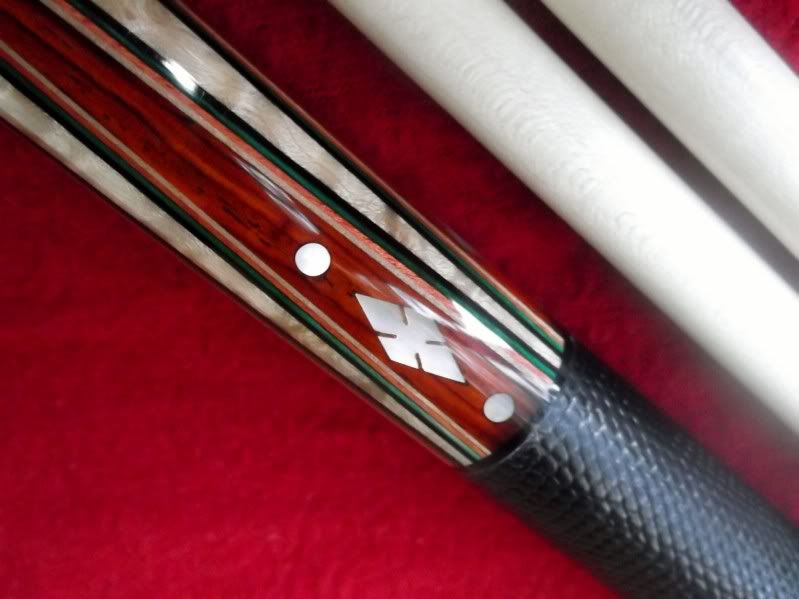
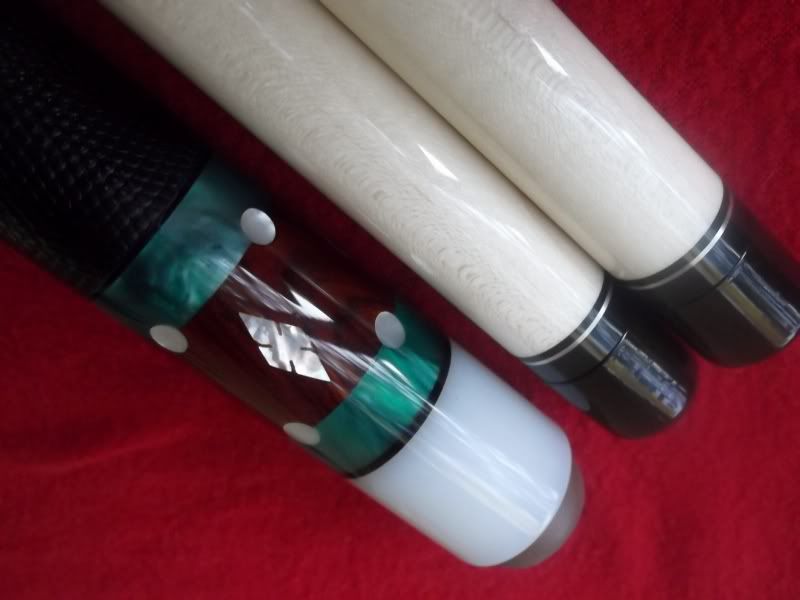
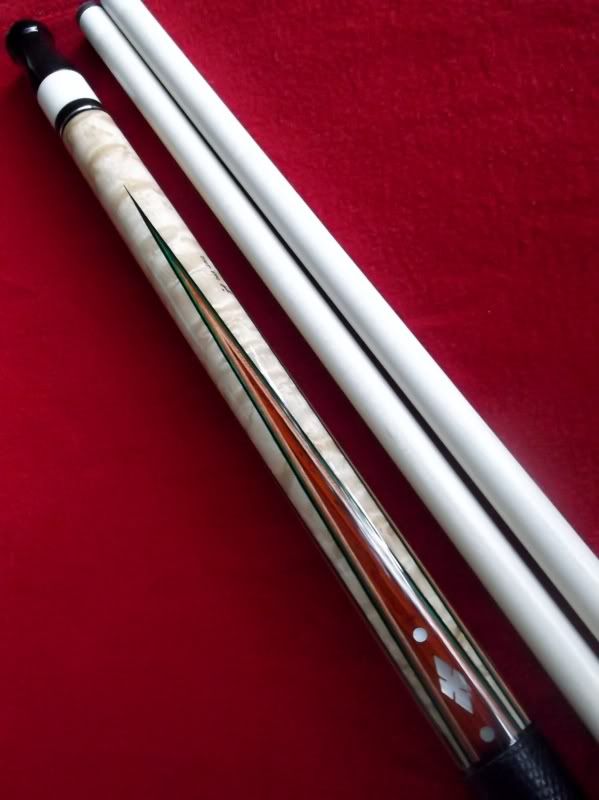



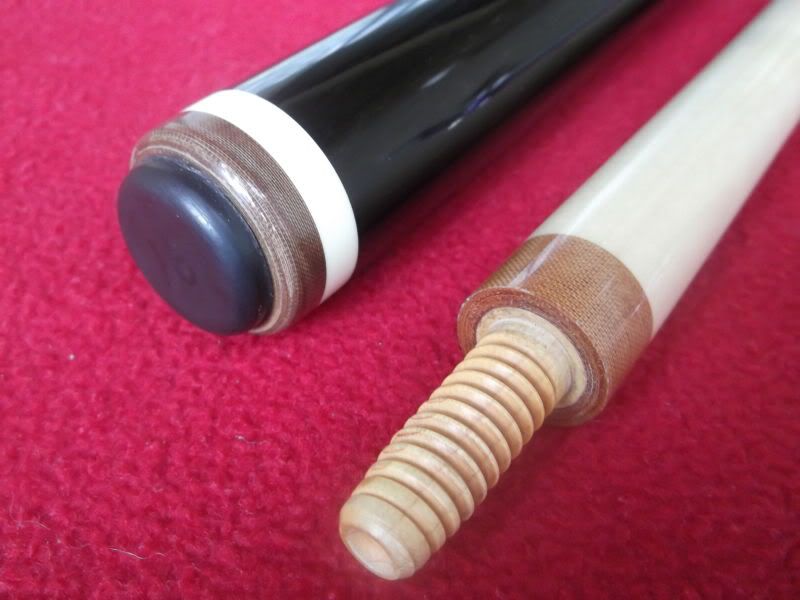
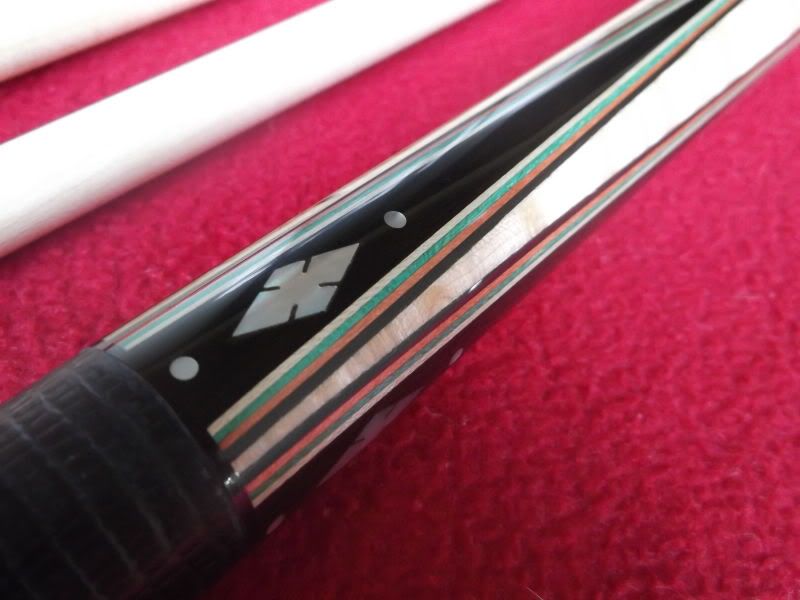










JC
Coos Cues
Lenny is mostly right. Taking pictures of objects for sale is all about the lighting and almost zero about the camera. The cheapest consumer model of point and shoot camera will take good pictures for this purpose if the lighting is correct. Google how to take good pictures for E-bay for lots of good information.
camera
i use a cannon g10
i use a cannon g10
Worry more about the quality of light rather than quality of camera. Also, get a circular polarizer for your lens *sssshhh, these are a secret*. It will reduce/eliminate the distracting glares that are present in most photos of cues.
Here's how well they work...note the reflections outside the lens & deep colors inside.

Here's how well they work...note the reflections outside the lens & deep colors inside.

The lens makes the camera, not the body. You can have the most expensive camera, or even a $20,000 Hasblad digital back.. if the glass attached is garbage, so is the camera.
Canon T3 DSLR
I've got a lot of expertise in this field, being a small time cue collector and camera store VP, and ex-pro photographer. If you are going to be selling your cues on Ebay or here, you won't need much. Forget completely about Mega Pixels. For screen resolution even 1-2MP is sufficient. The more important features are low noise, sharpness, color and contrast. And these are things that keep getting better, year after year, even though MP gets stressed more than anything. That all being said, here are some brief guidelines:
1.Stick with a major brand. Canon, Nikon, Sony, Fuji, Olympus, Pentax, Leica. For my own camera's I use Canon, Nikon and Fuji. I just got a Fuji X10 which is freaking amazing. For SLR's I prefer Canon and Nikon.
2.If you are buying a point-and-shoot, make sure it has a good macro function. If you are buying a digital SLR, consider getting a dedicated Macro lens. (One of the things I like about the Nikon DSLR's is that all of the old lenses--all the way back to the 1960's--fit and primarily function on their current bodies. Nikon makes exceptional macro lenses and have for the past 40 years. The older manual focus 55mm Micro's can be had for $150 and are super sharp.)
3.Consider buying used. More bang for your buck. A gently used model from the last couple years might cost your the same as the current model, several steps down. Especially lenses.
4.Buy lighting. As many people pointed out above, lighting is absolutely the most important aspect of photography. Even cheap camera flashes like the older Nikon or Canon flashes will work. The key is making sure your flashes have manual power settings. The one in your bag now might do the trick! Or check out the LumoPro LP160 (Full disclosure, I made it.) Check out these kits to get some ideas. You will need to look at either making or buying light modifiers to go along. Such as building a $10 macro studio.
Here is an example of how to use a few flashes and a few pieces of paper.
And for shooting shiny objects, Double diffusion is the best possible method. A cloudy day can also be really really good. Considering most of your shots will probably be on a pool table in a dim pool hall, look at getting some flashes, stands and modifiers. I can't stress enough, lighting is where to spend your money.
5.Get a camera that has one or all of the following. This will help to connect flashes now or at a later time.
-A built-in flash that has manual power. This will allow you to optically trigger a flash that has a built in optical slave like the LumoPro LP160.
-A 'PC outlet' This is a proprietary connection designed for connecting flashes to your camera using cords.
-A standard hot-shoe on top of the camera.
Shameless plug...
These are not the type of questions you get answered at Best-buy or on Amazon. You're going to need a photo specialty shop to assure you not only don't spend too much, but spend in the right direction. Find a shop that has a dedicated lighting specialist and working photographers employed in sales (and perhaps even a VP billiard fanatic.)
Links:
Learn how to light: Strobist.com
Light for less with less: LumoPro.com
Camera Reviews: dpreview.com
Industry news: robgalbraith.com
My shop: mpex.com
1.Stick with a major brand. Canon, Nikon, Sony, Fuji, Olympus, Pentax, Leica. For my own camera's I use Canon, Nikon and Fuji. I just got a Fuji X10 which is freaking amazing. For SLR's I prefer Canon and Nikon.
2.If you are buying a point-and-shoot, make sure it has a good macro function. If you are buying a digital SLR, consider getting a dedicated Macro lens. (One of the things I like about the Nikon DSLR's is that all of the old lenses--all the way back to the 1960's--fit and primarily function on their current bodies. Nikon makes exceptional macro lenses and have for the past 40 years. The older manual focus 55mm Micro's can be had for $150 and are super sharp.)
3.Consider buying used. More bang for your buck. A gently used model from the last couple years might cost your the same as the current model, several steps down. Especially lenses.
4.Buy lighting. As many people pointed out above, lighting is absolutely the most important aspect of photography. Even cheap camera flashes like the older Nikon or Canon flashes will work. The key is making sure your flashes have manual power settings. The one in your bag now might do the trick! Or check out the LumoPro LP160 (Full disclosure, I made it.) Check out these kits to get some ideas. You will need to look at either making or buying light modifiers to go along. Such as building a $10 macro studio.
Here is an example of how to use a few flashes and a few pieces of paper.
And for shooting shiny objects, Double diffusion is the best possible method. A cloudy day can also be really really good. Considering most of your shots will probably be on a pool table in a dim pool hall, look at getting some flashes, stands and modifiers. I can't stress enough, lighting is where to spend your money.
5.Get a camera that has one or all of the following. This will help to connect flashes now or at a later time.
-A built-in flash that has manual power. This will allow you to optically trigger a flash that has a built in optical slave like the LumoPro LP160.
-A 'PC outlet' This is a proprietary connection designed for connecting flashes to your camera using cords.
-A standard hot-shoe on top of the camera.
Shameless plug...
These are not the type of questions you get answered at Best-buy or on Amazon. You're going to need a photo specialty shop to assure you not only don't spend too much, but spend in the right direction. Find a shop that has a dedicated lighting specialist and working photographers employed in sales (and perhaps even a VP billiard fanatic.)
Links:
Learn how to light: Strobist.com
Light for less with less: LumoPro.com
Camera Reviews: dpreview.com
Industry news: robgalbraith.com
My shop: mpex.com
JC
Coos Cues
I've got a lot of expertise in this field, being a small time cue collector and camera store VP, and ex-pro photographer. If you are going to be selling your cues on Ebay or here, you won't need much. Forget completely about Mega Pixels. For screen resolution even 1-2MP is sufficient. The more important features are low noise, sharpness, color and contrast. And these are things that keep getting better, year after year, even though MP gets stressed more than anything. That all being said, here are some brief guidelines:
1.Stick with a major brand. Canon, Nikon, Sony, Fuji, Olympus, Pentax, Leica. For my own camera's I use Canon, Nikon and Fuji. I just got a Fuji X10 which is freaking amazing. For SLR's I prefer Canon and Nikon.
2.If you are buying a point-and-shoot, make sure it has a good macro function. If you are buying a digital SLR, consider getting a dedicated Macro lens. (One of the things I like about the Nikon DSLR's is that all of the old lenses--all the way back to the 1960's--fit and primarily function on their current bodies. Nikon makes exceptional macro lenses and have for the past 40 years. The older manual focus 55mm Micro's can be had for $150 and are super sharp.)
3.Consider buying used. More bang for your buck. A gently used model from the last couple years might cost your the same as the current model, several steps down. Especially lenses.
4.Buy lighting. As many people pointed out above, lighting is absolutely the most important aspect of photography. Even cheap camera flashes like the older Nikon or Canon flashes will work. The key is making sure your flashes have manual power settings. The one in your bag now might do the trick! Or check out the LumoPro LP160 (Full disclosure, I made it.) Check out these kits to get some ideas. You will need to look at either making or buying light modifiers to go along. Such as building a $10 macro studio.
Here is an example of how to use a few flashes and a few pieces of paper.
And for shooting shiny objects, Double diffusion is the best possible method. A cloudy day can also be really really good. Considering most of your shots will probably be on a pool table in a dim pool hall, look at getting some flashes, stands and modifiers. I can't stress enough, lighting is where to spend your money.
5.Get a camera that has one or all of the following. This will help to connect flashes now or at a later time.
-A built-in flash that has manual power. This will allow you to optically trigger a flash that has a built in optical slave like the LumoPro LP160.
-A 'PC outlet' This is a proprietary connection designed for connecting flashes to your camera using cords.
-A standard hot-shoe on top of the camera.
Shameless plug...
These are not the type of questions you get answered at Best-buy or on Amazon. You're going to need a photo specialty shop to assure you not only don't spend too much, but spend in the right direction. Find a shop that has a dedicated lighting specialist and working photographers employed in sales (and perhaps even a VP billiard fanatic.)
Links:
Learn how to light: Strobist.com
Light for less with less: LumoPro.com
Camera Reviews: dpreview.com
Industry news: robgalbraith.com
My shop: mpex.com
All great information but now I'm going to give the one tip to cut to the chase.
Almost all consumer level camcorders have still picture capabilities. Compared to a dedicated still picture camera the photos are a joke resolution wise. For taking photos suitable to view on a computer monitor however, the resolution is more than adequate at 3 mp or so. And here's the biggie. Camcorders will focus way closer than most still cameras making them ideal for this purpose. So buy a mid level camcorder, use it to video yourself playing pool and as a bonus it's perfect for E-Bay type photography.